[ad_1]
Tracking your customer’s conversion paths aids you have an understanding of the journey your buyers acquire prior to converting. Recognizing this journey is essential as it exhibits you the locations to target on to boost and speed up conversions.
So what specifically are conversion paths and how do you keep track of them? Continue to keep studying to understand how to create profitable conversion paths in Google Analytics so you can deliver a lot more potential customers and revenue.
Desk of contents
What is a conversion path in Google Analytics?
A conversion path is a collection of steps a new web page visitor requires prior to finishing a ideal motion on your internet site, also regarded as a conversion. This motion can be a type fill, a button simply click, a invest in, and more.
For case in point, suppose a single of the plans on your website is to make sales opportunities through an e book. In that scenario, a conversion route will illustrate a related channel of clicks that web page readers get to submit their get in touch with data.
Here’s an illustration of some typical conversion paths:
Conversion paths ordinarily include a landing webpage, articles present, and a phone to motion button. You can also incorporate thank you web pages in your route.
Why are conversion paths critical?
If you want to boost conversion on your site, you will need to know what’s foremost to individuals conversions. And given that consumers typically just take numerous steps just before changing, it is important to know the ins and outs of individuals behaviors.
Let us dive further into some of the factors why tracking conversion paths is so significant for making and protecting a internet marketing action approach.
- Know what’s working and what is not. Recognizing the behavioral paths of your potential customers and customers will help you to discover which strategies and touchpoints are functioning so you can target your funds and resources accordingly. For instance, you may detect that extra of your users’ conversion paths commence from PPC advertisements than your social adverts so you can allocate extra spending plan to PPC to improve your profits.
- Establish bottlenecks in your funnel. Conversion paths assistance you to see in which there are leaks in your funnel. For instance, you can see if there is a fall-off for a unique give, possibly due to a bug, a tracking challenge, or simply because an enhancement is necessary (this kind of as to be additional mobile-pleasant, to have much less fields, etc.)
- Greater have an understanding of your viewers. You can also get insights into elements like place, earnings position, and gender to get a greater sense for your target audience. For instance, you may perhaps discover a significant cart abandonment rate between customers in a individual locale. You can look to see if the situation is a absence of localized payment solutions, which you can boost on to better purchaser experience and enhance conversion fees as a outcome.
- Simplify marketing campaign reporting. Last but not least, apparent conversion paths permit you to easily obtain metrics throughout channels, which helps you analyze your cross-channel marketing effectiveness far more correctly and raise your ROI.
How to set up conversion paths in Google Analytics
Now that you know the great importance of conversion paths, it is time to dive into how to set them up effectively in Google Advertisements and Google Analytics.
1. Established up your conversion monitoring
To make use of conversion paths in Google Analytics, you of study course need to have to build what your conversions are. Depending on what advertising and marketing tactics you are employing, you can do this as a result of Google Adverts conversion tracking and/or via Google Analytics intention set up.
In Google Ads:
- Go to Equipment and configurations > Measurement > Conversions
- Click on +New Conversion Action.
- Click on on the Site
- Input your website’s URL
- Simply click on Scan
![]()
Future, you are going to established up your Google Tag, as demonstrated underneath, then enter the tag name and decide on the spot accounts.
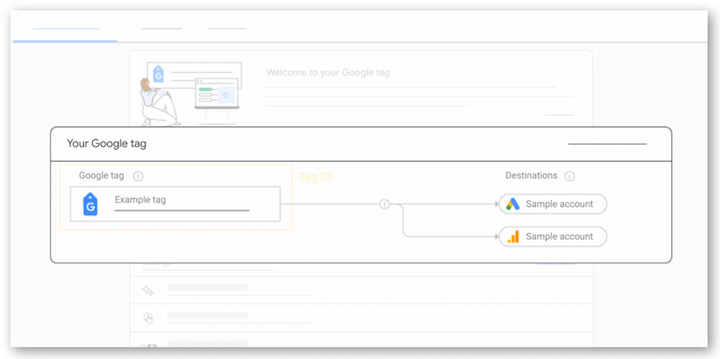
Established up your targets
You’ll also have to have to set up targets in Google Analytics. With GA4, this setup will be various, but for now, here’s what it appears to be like in Universal Analytics.
Click on Admin on the bottom left corner.
![]()
Click on on Aims
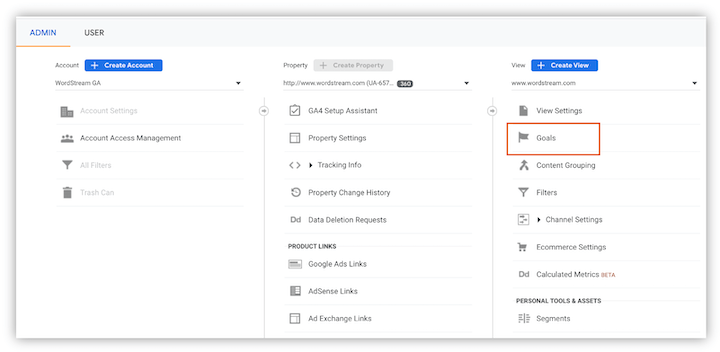
Soon after that, simply click on the custom made selection to established a new aim and add your purpose description and aspects. Your description entails a identify and objective variety, as demonstrated under.
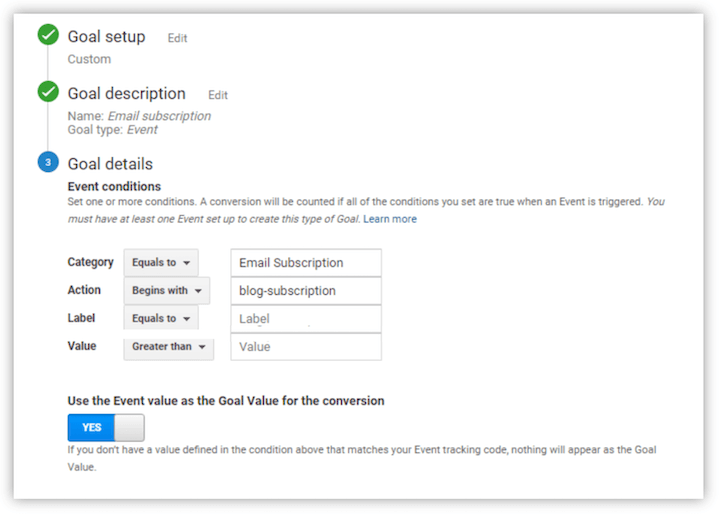
While there are 4 vital kinds of Google Analytics objectives you can opt for from, your desired conversion motion will establish your goal type.
- Duration: These observe how prolonged buyers continue to be on your website right before leaving, which you can use to keep track of engagement.
- Place: These ambitions track when a distinct site hundreds on your web-site as a way to keep track of a conversion. For example the thank you site that triggers after an e mail e-newsletter signup or a thank you for your order site.
- Internet pages per go to: These ambitions observe the variety of pages web visitors navigate in advance of leaving your site—which can also be a helpful Seo metric.
- Activities: These plans observe consumer interactions that Google does not commonly report, like PDF downloads, button clicks, outbound hyperlink clicks, or even downloading a pricing quote for firms like VoIP company providers.
Right after filling in your goal information, simply click on the worth button to set your goal’s financial price (we display you how to established conversion values below). Click “verify” and conserve.
Established up an attribution project
To use the conversion path report in Google Analytics, you ought to first make an Attribution undertaking. Go to Explore> Conversion Paths, and then abide by the prompts to established up your job.
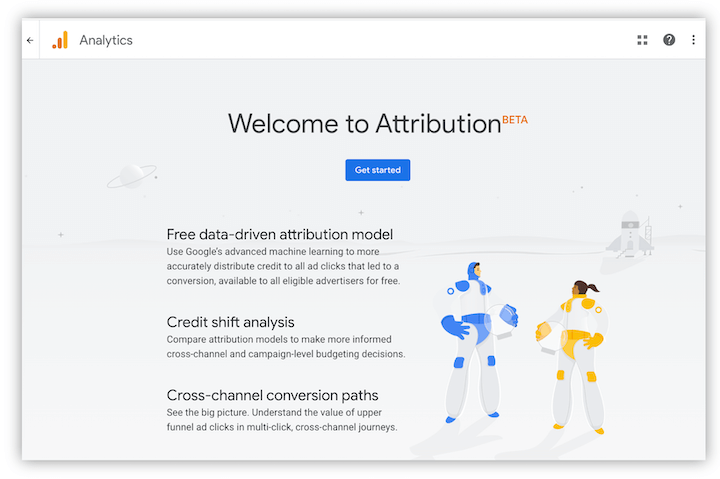
Once you have your project set up, you can now generate a conversion segment.
Produce a conversion section
Go to Conversions » Multi-Channel Funnels » Leading Conversion Paths. Then simply click on Conversion Segments.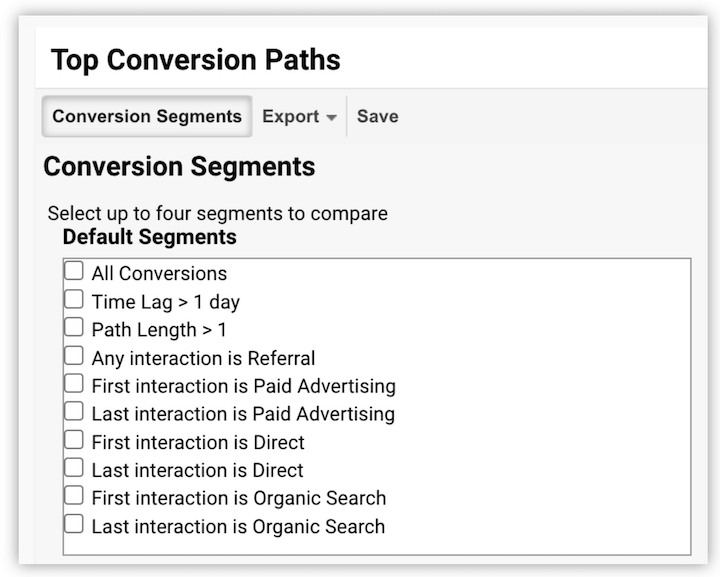
Click on Make New Conversion Segment. The new segment can determine your end users from a specific geographic site, who purchase a particular line of products, etc.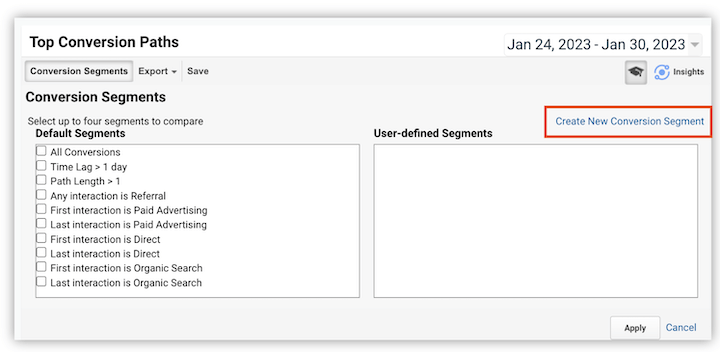
Define and name the new conversion phase. This assures that your Google Analytics and your Facts Studio demonstrate the similar reviews.
Click on Apply then Help save
Doing this will create a new conversion segment and also utilize the phase to your conversion route report.
Understanding the Leading Conversion Paths report
With your conversion paths set up, you can now use the Multi-Channel Funnels report in Google Analytics to greater comprehend your marketing and advertising attribution. This report will display you which channels contributed to a conversion on your website, these kinds of as organic and natural, immediate, paid, referral, and more.
To watch these paths, go to Conversions » Multi-Channel Funnels » Top rated Conversion Paths
Pro suggestion: Established the date array to the last a few months. Try to remember, the time lag to conversion can operate into days or weeks, so set your day variety for at least the previous 3 months. This is also frequently more than enough time to get actionable information.
Comprehending the Assisted Conversions report
Within the same tab in Google Analytics is an additional attribution modeling tool identified as the Assisted Conversions report. Assisted conversions for a given channel are all the channels that assisted or led to conversion but weren’t the last conversation.
For occasion, say a user scans a QR code for application down load but decides not to down load the app instantly. Later, they download the app via a link on your social media. Though the social link tap is thought of the very last-simply click conversion, your QR code performed the assisted conversion part which may perhaps not be accounted for by the conversion metrics.
The flowchart underneath illustrates assisted interactions further more.
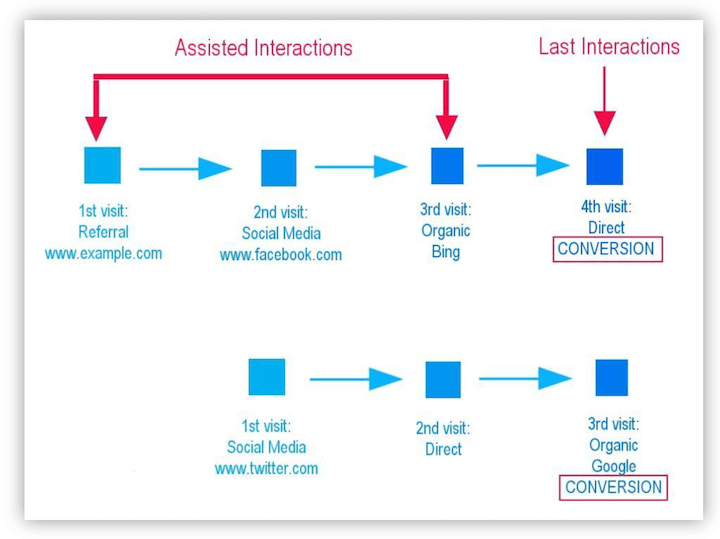
It’s important that you fully grasp assisted conversions to establish internet marketing channels that introduce prospects to your item. Then you can tailor your marketing and advertising tactics to make certain you catch the attention of quality leads from these channels and boost your conversion premiums.
By comprehension assisted conversions, you can also attribute values to paths and clicks in the line that made way for the ultimate conversion, these types of as referral back links, ads, and many others., as revealed in the report below.
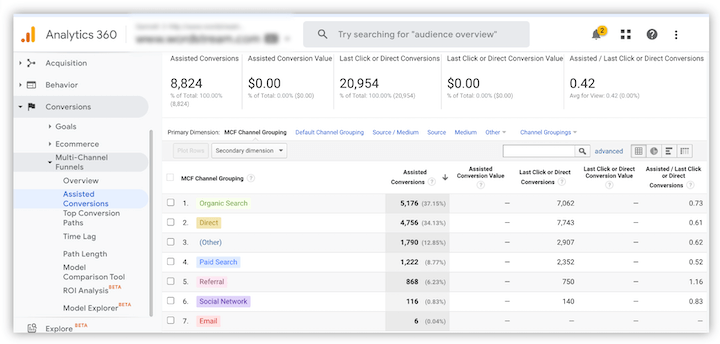
Undertaking this not only assists you fully grasp the role of many assisted conversion channels but also goes past the last-click on conversion to provide a obvious image of your campaign performance and the basic consumer journey.
Get your conversion paths set up right now
Conversion paths in Google Analytics enable you to observe user exercise on your web site and examine your campaign’s effectiveness, giving you insight into the best executing advertising channels. These insights then support you to allocate your sources accordingly and identify optimizations to boost your conversion prices.
About the author
David Pagotto is the Founder and Taking care of Director of SIXGUN, a digital marketing and advertising company dependent in Melbourne. He has been concerned in electronic advertising and marketing for above 10 a long time, aiding organizations get far more clients, much more access, and far more impact.
[ad_2]
Source hyperlink









